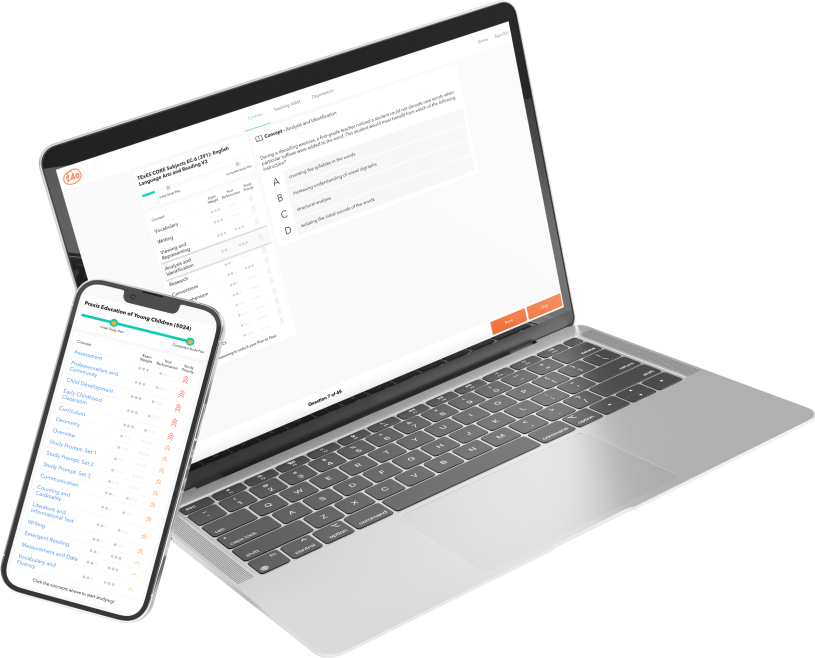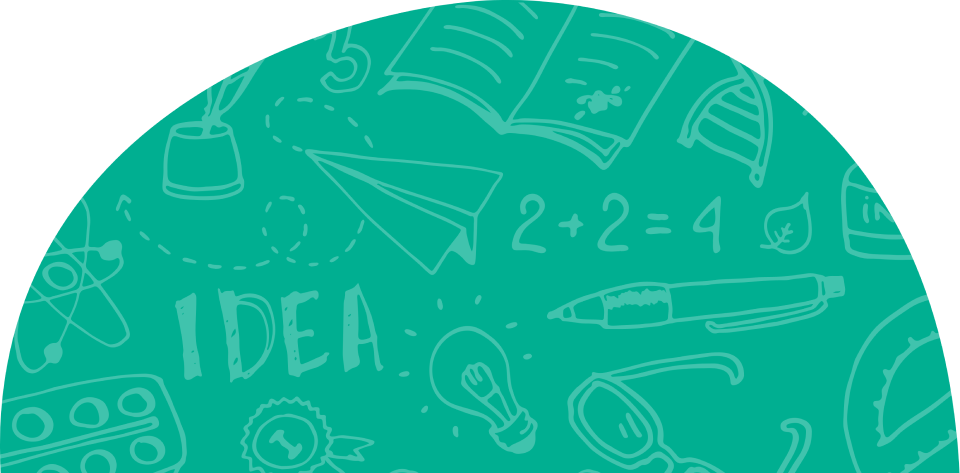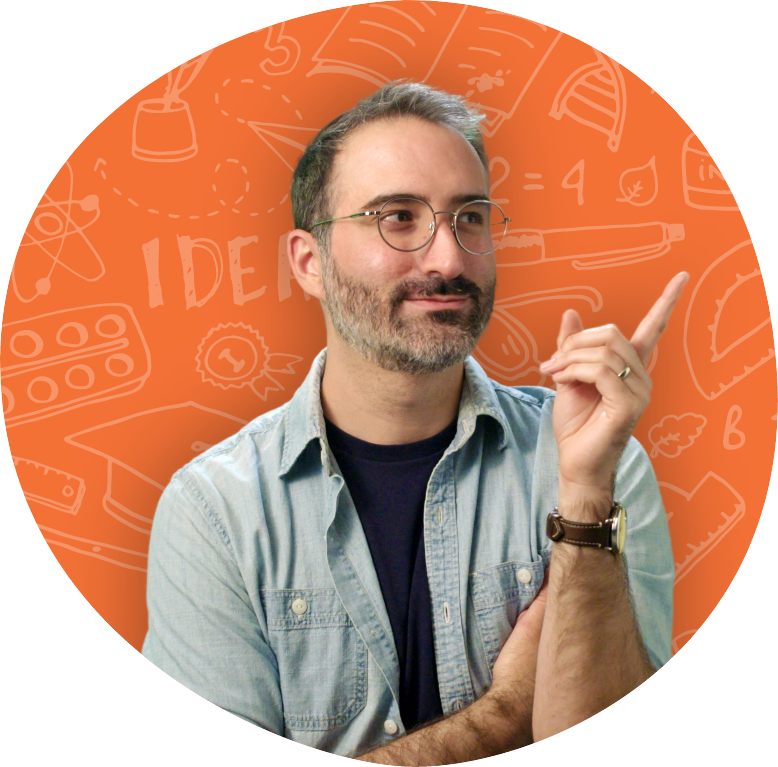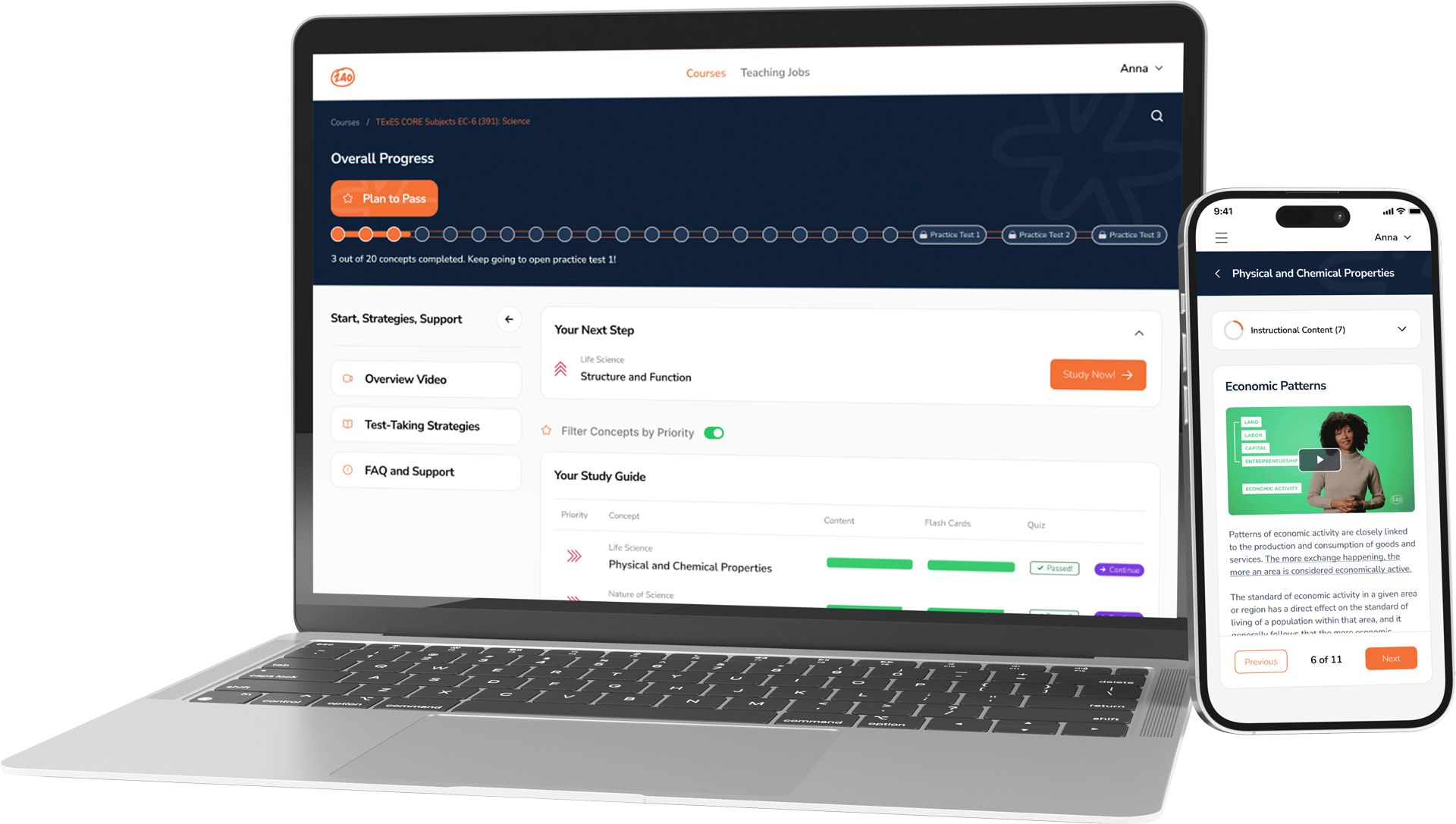Welcome to the Praxis 5543 test study guide, which includes practice questions. We’ll be introducing you to the core domains and concepts you need to know to pass the Special Education: Core Knowledge and Mild to Moderate Applications exam. This is one of the free resources we provide so you can see the high-level concepts you will find on the Praxis 5543 test to gauge how much you know.
Quick Links to Help You Navigate This Page
Praxis 5543 Test Information
The Praxis️ Special Education: Core Knowledge and Mild to Moderate Applications exam assesses the following six content categories: Development and Characteristics of Learners, Planning and the Learning Environment, Instruction, Assessment, Foundations and Professional Responsibilities, and Integrated Constructed-Response Questions. The purpose of this assessment is to assess those that are pursuing a career in the field of special education and, therefore, can demonstrate knowledge and application in the six content areas.
Format:
There are 90 selected-response questions and 3 constructed-response (essay) questions on the exam. You will have two hours of testing time. See the table below for the question breakdown by content category:

Cost:
$146
Scoring:
The score range and passing score of the Praxis️ Special Education: Core Knowledge and Mild to Moderate assessment vary from state-to-state. In order to identify your state’s score range and passing requirements, you will need to go to the ETS Praxis️: State Requirements page.
What test takers wish they’d done:
- Purchase a study guide
- Take practice tests
- Collect study materials (i.e. previous notes and textbooks from related classes, go to your local library, etc.)
- Develop a study plan to create a realistic schedule of what and when to study
- Practice explaining main concepts
- Join a study group
Information obtained from the ETS Praxis️ website.
Praxis 5543 Key Concepts You Need to Know
Development and Characteristics of Learners
This content category has 17 selected-response questions. These questions account for 14% of the entire exam.
Key Concepts
Developmental Delay versus Developmental Disability
A developmental delay is a condition when a child is less developed mentally and/or physically compared to his/her same-aged peers. A developmental disability is a group of conditions (physical, learning, language, and/or behavior delays) that impact a child’s day-to-day tasks and will usually last throughout the child’s life. Even though these two terms sound very similar, they are different. A developmental delay is when a child is behind on developmental milestones (i.e. sitting, walking, talking, etc.), but then, later on, will catch up to his/her same-aged peers. A developmental disability is a disability that will impact a child’s education and day-to-day skills for life and is diagnosed when the child is older. Some examples of this would be ADHD, ADD, Dyslexia, Dyscalculia, etc.
Major Disability Categories
The major disability categories under IDEA are autism, deaf-blindness, deafness, emotional disturbance, hearing impairment, intellectual disability, multiple disabilities, orthopedic impairment, other health impairment, specific learning disability, speech or language impairment, traumatic brain injury, and visual impairment (including blindness). For more information on the major disability categories, check out the IDEA website.
Learned Helplessness
Learned helplessness is when students believe they have little to no control over a situation. When students believe this continuously, they will make less of an attempt to do the task, behavior, etc. This can also impact students’ self-esteem. An example is when students struggle in math continuously and begin to fail in that subject. Many students will get to the point where they won’t even try and make negative comments (i.e. “Why bother? I’m so stupid. I’ll never understand math.”).
Planning and the Learning Environment
This content category has 20 selected-response questions. These questions account for 17% of the entire exam.
So, let’s talk about some key concepts you are more than likely going to see in this content category.
Key Concepts
Inclusion Programs
An inclusion program is a program in which children with special needs receive instruction in the least restrictive setting. When they are in the general education classroom, students will usually receive accommodations, modifications, and possibly the assistance of a paraeducator. The important thing to remember is that inclusion programs may vary depending on children’s needs. Listed below are examples of inclusion programs:
- Inclusion in general education classroom with collaboration
- Part-time placement in a general education classroom with support in a special education classroom
- Full-time placement in a special education resource room (and would have opportunities to interact with peers at lunch, recess, hallways, P.E., etc.)
- Part-time placement in a self-contained special education classroom
- Part-time placement in day treatment, therapy program, or special school
- Full-time placement in day treatment, therapy program, or special school
- Placement in a residential, hospital, or home program
There are several characteristics of successful inclusion programs. These
characteristics can include the following:
- Leadership at many levels working together (i.e. superintendents, principals, speech-language pathologists, occupational therapists, psychologists, and parents)
- Collaboration among special educators and general educators
- Looking at the purpose of assessments (Why are the assessments being used? How are they being used? Are students spending more time on assessments than instruction?)
- Providing support for students and staff (i.e. training, open communication, providing necessary materials)
- Helping parents become involved in making educational decisions for their children (i.e. communicate their rights, provide information and supports)
- Using collaborative teaching models (i.e. co-teaching, parallel teaching, consultation, teaming)
- Using classroom adaptations and instructional strategies in the general education setting
- Providing needed funding (i.e. services, technology, cost of paraeducator, training for special educator and paraeducator)
Common Strategies
There are many common strategies that teachers can use to help students with
special needs succeed in a general education setting. Listed below are some
examples of common strategies:
- Use a checklist to help students become organized
- Provide additional breaks as needed
- Provide additional time to complete assignments (as well as quizzes and tests if stated in students’ IEPs or Individualized Education Plans)
- Use graphic organizers
- Shorten assignments
- Break assignments into smaller tasks
- Develop a plan with the student to complete long term assignments (i.e. research papers and projects)
- Provide outlines, study guides, copies of notes (either given verbally or printed)
- Allow for an oral response on assignments, quizzes, and tests
- Provide additional accommodations as stated on students’ IEPs
It is important to note that each student has different needs and
learning styles and one strategy that may work for one student, may not work
for another. The important thing is that there is communication between the
special educator, general educator, student, student’s family, and IEP team members about what is serving the child well and what adjustments need to be made to their plan.
Preparing Students for Adulthood
There are many things that special educators can do to prepare students for
adulthood. In order to do this though, it is important to know what students’
postsecondary plans and desires are and how they fit with their abilities. This will guide
the special educator in the different types of skills that students will need to
learn prior to leaving high school. Listed below are some ideas on how special
educators can prepare students for adulthood:
- Daily living skills such as cooking, cleaning, and laundry
- Develop skills to advocate for self
- Community living skills such as using public transportation
- Pay bills
- Set up a budget and stick to it
- Medical care
- How to dress and interview for a job
- How to complete forms and applications
Teaching these skills to students with mild to moderate special needs will help them become independent, contributing members of society.
Instruction
This content category has 20 selected-response questions. These questions account for 17% of the entire exam.
So, let’s talk about some key concepts you are more than likely going to see in
this content category.
Key Concepts
Cooperative Learning
Cooperative learning or small group learning is a way to teach a few students to work collectively on a task. The benefits of cooperative learning are, encouraging problem solving, improving social interactions, encouraging discussion, and increasing students’ confidence and motivation. Students in special education benefit in the same ways and they also learn social skills along with being exposed to different settings and teaching methods. This is true with all students with special needs, but especially for those that are in a self-contained classroom more than in a general education setting. It also provides an opportunity for neurotypical students to engage with students that have needs different from their own.
Assistive Technology
According to the IDEA (Individuals with Disabilities Education Act), assistive technology (AT) is any item, piece of equipment or product system, whether acquired commercially off the shelf, modified, or customized, that is used to increase, maintain, or improve the functional capabilities of children with disabilities. There are two types of assistive technology: high tech assistive technology and low tech assistive technology. High tech AT includes the most complex devices and equipment that have digital or electronic components. Many of these devices require training to learn how to use them and have a high price point. Some examples of high tech AT are electronic augmentative communication devices, hearing aids, computers, and computer software (text to speech, voice recognition, word prediction, etc.).
Low tech AT includes devices or equipment that do not have complex features and therefore do not require much training and are less expensive. Some examples are large font worksheets, audiobooks, sandpaper to place under writing paper to receive sensory input while writing, pencil grips, raised lined paper or highlighted paper, graphic organizers, reading guide highlighter strips, highlighter tape to assist with note-taking, colored transparencies to use for reading, grid paper for math (assists children with making sure their numbers are in neat rows with doing math), kitchen timers, visual schedules, and velcro that can be used for folder activities or visual schedules.
Outside Support Services
Schools can use outside support services to create a supportive learning environment for students with special needs in the following ways:
- Work collaboratively with different community organizations to help students develop needed skills at school, home, and in the community
- Provide services in the school that the student would not otherwise receive or school does not have available (i.e. Adaptive P.E., occupational therapy, speech services, prevocational skills)
- Provide an opportunity for neurotypical members of the community to work with students with special needs
- Help students prepare for post-secondary plans
- Identify organizations that can provide further assistance to families of students with special needs
Assessment
This content category has 17 selected-response questions. These questions account for 14% of the entire exam.
So, let’s talk about some key concepts you are more than likely going to see in
this content category.
Key Concepts
Recording Observations
Recording observations is a way to track students’ academic progress and behaviors. It is important to record observations as a means of assessment because it will give the special educator a simple, but a resourceful way to determine students’ progress in behaviors and academic progress. It also allows the special educator to track student progress in many different settings (i.e. special education classroom, general education classroom, recess, hallways, the community for vocational and life skills). The table below identifies the different ways to record observations and what they are.
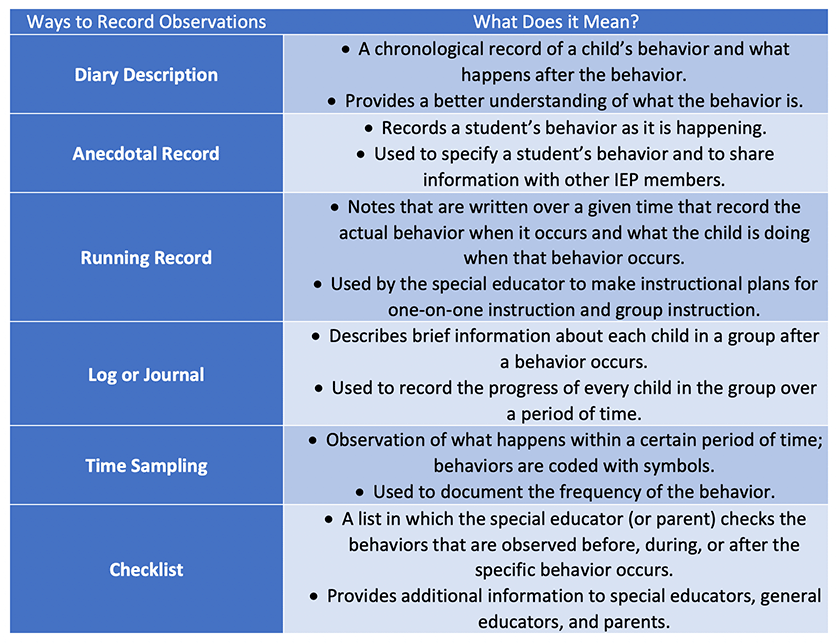
Discriminatory Test Practices
Test practices may be considered discriminatory when they do not take into consideration the external factors of test-takers. This could include wording that is not commonly used in their community or questions that are based on experiences that they have never had before (i.e. questions about Christian holidays and they participate in a different religion). When these external factors occur, it can prohibit students from demonstrating their true knowledge in the assessed areas.
Constructing Tests
Teachers often construct their own tests to assess what exactly is being taught
in the classroom. Not all assessments that are premade are useful in classrooms, however, some assessments such as district benchmarks may be required. Teachers can develop assessments that reflect what was being taught in the classroom and what students learned in the assessed areas. The information from this can guide the special educator to make instructional decisions (i.e. move on to next skills, reteach, provide further opportunities to practice assessed skills).
Foundations and Professional Responsibilities
This content category has 16 selected-response questions. These questions account for 13% of the entire exam.
So, let’s talk about some key concepts you are more than likely going to see in
this content category.
Key Concepts
Discussing Students
You can discuss your students and their needs with anyone on the students’ IEP team. These members can include the following: special educator, general educator (that has students with special needs in class), parents, students with special needs, school principal, paraeducator, occupational therapist, physical therapist, speech and language pathologist, school nurse, bus driver (especially if students have medical and/or behavioral needs), etc. Students’ therapists, specialists, and physicians can be in communication with the school only if parents have filled out a release of information form. It is important to keep students’ basic information and needs confidential. If it is not, communication and collaboration, especially between the school and students’ families, will break down. There are also legal consequences that may occur depending on what information is shared and who it is shared with.
IEPs
IEPs, Individualized Education Plans, are developed by IEP team members to provide appropriate instructional services in the least restrictive environment. The members of the IEP team may include the following individuals: special educator, general educator, parents, students with special needs, school principal, paraeducator, occupational therapist, physical therapist, speech and language pathologist, school nurse, and bus driver (especially if students have medical and/or behavioral needs). The school is held accountable for students’ IEPs. The school must provide special education services to children with special needs as well as make their best effort to assist students in achieving their IEP goals, objectives, and benchmarks.
It is also important to note that IEP teams are responsible for providing instructional services, accommodations, modifications, etc. as stated on students’ IEPs.
Personal Cultural Biases
Personal cultural biases can affect teachers in the following ways:
- Reinforce negative stereotypes of students of different cultures
- Set up a negative classroom environment
- Have lowered expectations for students
- Have different expectations for each group of individuals based on culture, gender, religion, or ethnicity.
There are ways to counteract these personal cultural biases. Teachers can conduct a self-study that allows them to reflect and take another look at their biases and how it affects their students. This self-study focuses on four components: self-awareness, physical environment, pedagogical environment, and relationships with families and communities. After completing the self-study, special educators will have a better understanding of what their cultural biases are and how they can change them.
Integrated Constructed-Response Questions
This content category has 3 integrated constructed-response questions. These questions account for 25% of the entire exam.
Use 240 Tutoring’s Constructed-Response Guide to learn how to craft your responses.
Key Information
The constructed-response questions will assess the knowledge of the following three areas: instruction and assessment, learning environment and classroom management, and collaboration. This portion of the assessment allows you to create your own response to three different areas in essay and short-answer format. It is recommended to save a minimum of thirty minutes of this assessment to focus on this section. You will still have two hours to complete the whole exam, but it is recommended to spend 90 minutes on the multiple-choice portion and 30 minutes on the constructed-response questions.
And that’s some basic info about the exam.
Now, let’s look at a few practice questions in each area to see how these concepts might actually appear on the Praxis 5543.
Praxis 5543 Practice Questions and Answers
Question 1
Which of the following IDEA categories of disability impacts the highest percentage of students?
- specific learning disability
- physical impairment
- intellectual disability
- communication impairment
Correct answer: 1.
Specific learning disabilities are the most common.
Question 2
Cystic fibrosis (CF) is a condition in which the body is unable to remove wastes at a typical rate such as mucus from the lungs. Jack’s parents have notified the school that he will need a special breathing treatment that lasts about 30 minutes once a day at school to help minimize the effects of his disease. Under what category would Jack qualify for special education services?
- Other Health Impairment (OHI)
- Medical Disability
- Speech or Language Impairment
- Specific Learning Disability
Correct answer: 1.
CF will impact Jack’s ability to be on task and he will miss 30 minutes of instruction daily. This is considered OHI under special education.
Question 3
A high school resource teacher is teaching her math class learning about equivalent fractions. She has taught about fractions at the front of the room and students have tried working problems at their desk. Some of them are continuing to struggle. What other activity can she engage her students in to ensure all learning styles have been addressed?
- using fraction tiles to identify equivalent fractions
- provide worksheets as homework so they can discuss with their parents
- have them create a presentation on equivalent fractions
- make a recipe that has fractions in the amounts of needed ingredients
Correct answer: 1.
This allows kinesthetic learners to practice fractions with a manipulative and have hands-on practice.
Question 4
In Ms. Jackson’s emotional behavior support self-contained class, her nine students are most likely to have difficulty with which of the following aspects of communication development?
- being able to interpret a speaker’s feelings from their tone of voice
- understanding new vocabulary words in context
- speech production free of articulation errors
- being able to use syntax patterns that are correct
Correct answer: 1.
This is the correct answer because students with emotional and behavioral disability don’t understand nonverbal communication, such as tone of voice, very well.
Question 5
Which of the following would be illegal when considering a child for special education services?
- qualifying a child in high school that has been able to pass previous grades
- testing all children in English
- using multiple tests to assess a disability
- allowing a committee to make the decision if services are appropriate
Correct answer: 2.
Children must be tested in their native language. It is illegal to require all students to test in English.
Question 6
When deciding the least restrictive environment (LRE) for a student with disabilities, what should the IEP team consider?
- the disability levels of the other students in the classroom
- the opinion of previous educators of the student
- distance of base school as compared to regional program location
- frequency, location, duration, and intensity of the identified services needed by the student
Correct answer: 4.
This is the correct answer because LRE considerations include frequency, location, and duration of the special education and related services.
Question 7
According to the guidelines, the IEP committee must address all of the following when planning for students with autism except:
- typical grade-level peers
- behavioral and social strategies
- in-home training
- community-based training
Correct answer: 1.
While curriculum influences a student’s goals, an IEP should be focused on that student as an individual rather than comparing them to grade level peers.
Question 8
Which of the following procedures should be addressed when developing and implementing the IEP objectives in instructional planning for students with disabilities?
- The IEP committee develops the IEP in isolation from any existing evaluation data.
- The IEP committee develops the IEP based on existing evaluative data from the general education teacher and related services personnel, current campus, district, and/or state assessments, and any evaluations and information provided by the parents.
- The IEP committee develops the IEP with input only from the general education teacher and parents.
- The ARD committee develops the IEP based on existing district and state assessment data.
Correct answer: 2.
All relevant data from the stakeholders is important in the planning, development, and implementation of the IEP objectives to ensure student access, participation, and progress within the general education curriculum.
Question 9
When the IEP committee determines that a student’s behavior is a manifestation of the student’s disability, the IEP committee must conduct or complete which of the following?
- an Independent Educational Evaluation (IEE)
- a Functional Behavioral Assessment (FBA)
- a Behavioral Intervention Plan (BIP)
- an Individual Educational Plan (IEP)
Correct answer: 2.
An FBA is necessary to evaluate how the behavior is impacting the student’s ability to function and learn. An FBA refers to a problem-solving framework to address student behavior, determine strategies to identify the reason for the behavior, review and consider the social, emotional, and cognitive factors of the behavior, and design interventions to address and redirect behavior. The special educator must be cognizant of the ethics, the LEA (Local Education Agency) policies, state and federal laws, and Procedural Safeguards relative to planning, facilitating, and implementing discipline procedures for students with disabilities.
Question 10
Children may qualify for services through special education before entering school. What is the name of the plan designed for a child under 3 years old?
- Individualized Family Service Plan (IFSP)
- Individualized Education Plan (IEP)
- Early Childhood Intervention Plan (ECI)
- Independent Educational Evaluation (IEE)
Correct answer: 1.
An IFSP identifies a child’s needs and goals prior to entering school.
Question 11
In order for a special education teacher to monitor IEP progress on reading goals on fluency and accuracy for a small group of fourth-grade students, which is the best assessment procedure?
- record each student’s accuracy and speed on a weekly graph
- create a reading portfolio that lists words read accurately monthly
- complete an error analysis of students’ reading every 30 days
- perform an informal reading inventory every 30 days
Correct answer: 1.
This is the correct answer because a weekly basis is essential to providing feedback.
Question 12
Ms. Cooper uses think-pair-share as a way to evaluate progress and adapt instruction. Which type of assessment is this?
- guided practice
- summative assessment
- formative assessment
- standardized achievement testing
Correct answer: 3.
This is the correct answer because a formative assessment is a process used by teachers and students during instruction that provides feedback to adjust ongoing teaching and learning to improve students’ achievements of intended instructional outcomes.
Question 13
The secondary teacher of students with learning disabilities has been teaching the students to use Cornell Notes in all of the content classes. The best benefit of this strategy would be which of the following?
- engages students in the lessons
- provides an opportunity for the students to write
- serves as an organizational tool for due dates and upcoming projects
- creates a study guide to use for the content classes’ tests
Correct answer: 4.
The focus is on the students’ responsibility and higher order thinking skills: the synthesizing of the learning presented by targeting the main idea and summarizing the text. The student-generated questions and answers serve as a self-designed study guide.
Question 14
A new student just moved into a small town and qualifies for special education services because he is hard of hearing. He primarily communicates using sign language. The Local Education Agency (LEA) does not have a certified sign language interpreter, but they do have a certified special education teacher. What is the district required to do in this situation?
- immediately hire an interpreter
- hold an emergency IEP committee meeting to add a goal for the student to learn lip reading
- offer a fully written/visual curriculum
- provide support through the special education teacher
Correct answer: 1.
This is the correct answer because this is the student’s only way of fully accessing the curriculum.
Question 15
A student with fine motor coordination and writing difficulties who receives in-class support with the occupational therapist would benefit from what accommodation?
- use of adaptive writing utensils
- directions simplified and repeated
- special lighting
- separate setting
Correct answer: 1.
This is the correct answer because adaptive writing utensils, such as pen grips and weighted holders, are handwriting tools geared to help these children become more successful with writing tasks.
Question 16
A student with a learning disability needs help with mathematical computation skills. The special education teacher is planning to teach basic math skills and mathematical reasoning through software for reinforcement. This type of software would be valuable for the teacher’s purpose because of its ability to produce:
- immediate feedback on answers.
- fun visual graphics.
- instructional grouping profile.
- unlimited examples of different skills.
Correct answer: 1.
This is the correct answer because
research has shown that using math software is an effective instructional strategy to use with students who have a specific learning disability in mathematics because it provides students with immediate feedback that helps ensure that students are not learning facts incorrectly.
Question 17
Which of the following strategies would be most effective for assimilating and training a student with a disability to be a product stocker at the school snack shop?
- Have another student work beside the student to mentor and model proper behavior.
- Have a list of tasks to be completed each day by the student.
- Have an in-depth training on the duties of the job and provide a list of tasks for the student to complete.
- Train the student in a classroom setting before the student begins work.
Correct answer: 1.
Learning through mentoring and modeling is the most effective way for students with disabilities to effectively learn new skills.
Question 18
A transition plan must be addressed in the IEP during an annual committee meeting when the student reaches which age?
- 16
- 12
- 10
- 18
Correct answer: 1.
A transition plan must be addressed when a student reaches the age of 16. The special education teacher implements the procedures needed to facilitate the transition process.
Question 19
Which of the following elements of a lesson plan is most beneficial for Ms. Jackson to use for her ADHD students on an instructional objective related to avoidance behaviors?
- guided practice
- anticipatory set
- modeling
- evaluation
Correct answer: 2.
This is the correct answer because the anticipatory set occurs at the beginning to engage the students in the topic which is when avoidance behaviors occur.
Question 20
A special education teacher has been working with her students to use the textbook’s glossary to find the meanings of unknown words during instructional reading. Which of the following is the greatest benefit to this approach?
- allows students to take active control of their learning process
- promotes the development of critical thinking skills
- allows the special education teacher to spend more time addressing the needs of other students
- allows students to relate new information to prior knowledge
Correct answer: 1.
By teaching the students how to use the glossary, the teacher is providing the students with a life-long skill that they can use independently in the future to assist with their own learning.

